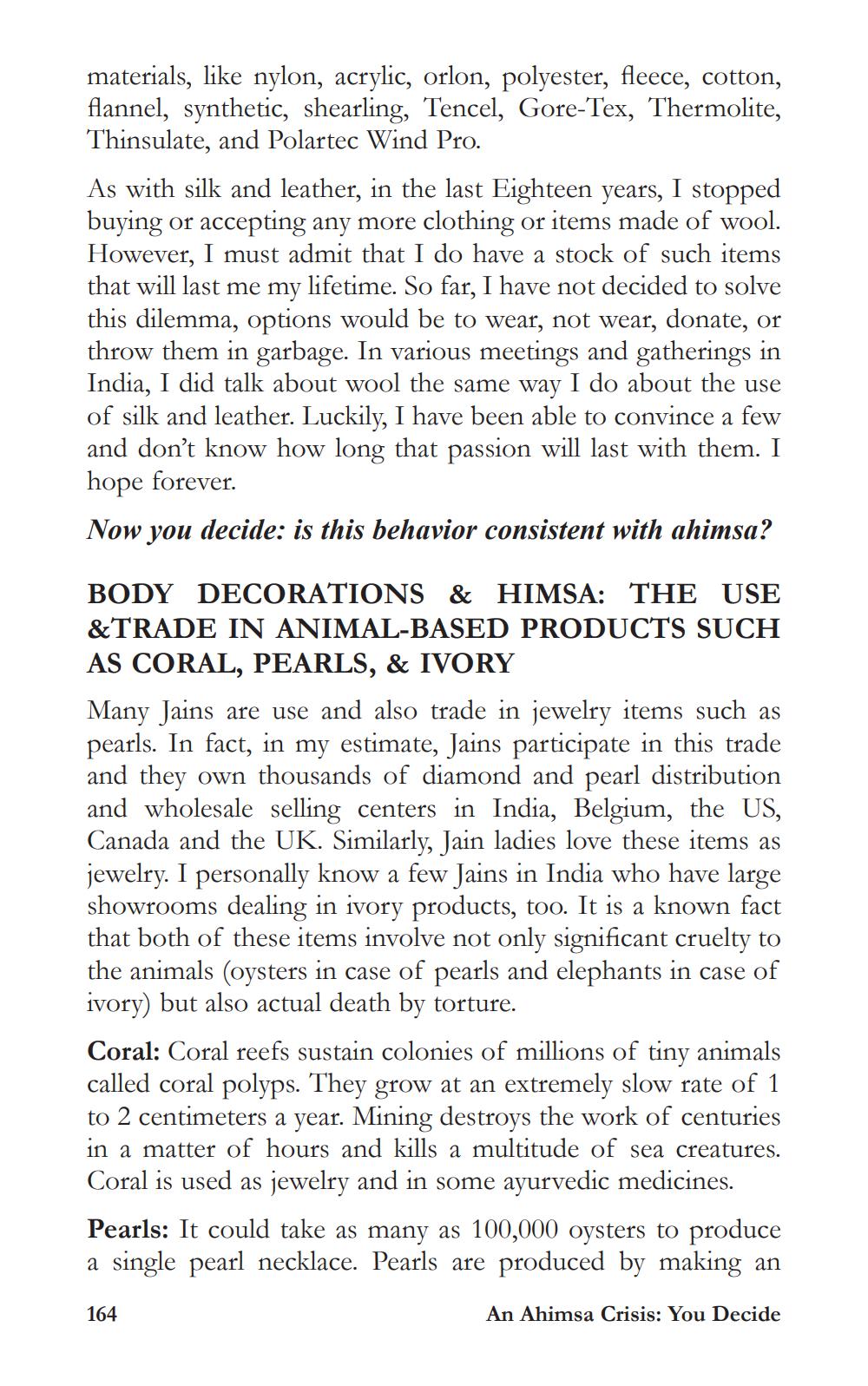________________
materials, like nylon, acrylic, orlon, polyester, fleece, cotton, flannel, synthetic, shearling, Tencel, Gore-Tex, Thermolite, Thinsulate, and Polartec Wind Pro. As with silk and leather, in the last Eighteen years, I stopped buying or accepting any more clothing or items made of wool. However, I must admit that I do have a stock of such items that will last me my lifetime. So far, I have not decided to solve this dilemma, options would be to wear, not wear, donate, or throw them in garbage. In various meetings and gatherings in India, I did talk about wool the same way I do about the use of silk and leather. Luckily, I have been able to convince a few and don't know how long that passion will last with them. I hope forever. Now you decide: is this behavior consistent with ahimsa?
BODY DECORATIONS & HIMSA: THE USE &TRADE IN ANIMAL-BASED PRODUCTS SUCH AS CORAL, PEARLS, & IVORY Many Jains are use and also trade in jewelry items such as pearls. In fact, in my estimate, Jains participate in this trade and they own thousands of diamond and pearl distribution and wholesale selling centers in India, Belgium, the US, Canada and the UK. Similarly, Jain ladies love these items as jewelry. I personally know a few Jains in India who have large showrooms dealing in ivory products, too. It is a known fact that both of these items involve not only significant cruelty to the animals (oysters in case of pearls and elephants in case of ivory) but also actual death by torture. Coral: Coral reefs sustain colonies of millions of tiny animals called coral polyps. They grow at an extremely slow rate of 1 to 2 centimeters a year. Mining destroys the work of centuries in a matter of hours and kills a multitude of sea creatures. Coral is used as jewelry and in some ayurvedic medicines. Pearls: It could take as many as 100,000 oysters to produce a single pearl necklace. Pearls are produced by making an
164
An Ahimsa Crisis: You Decide




